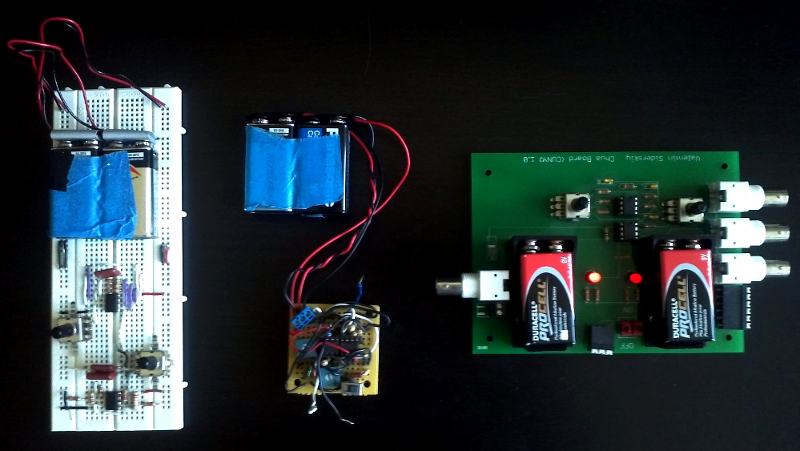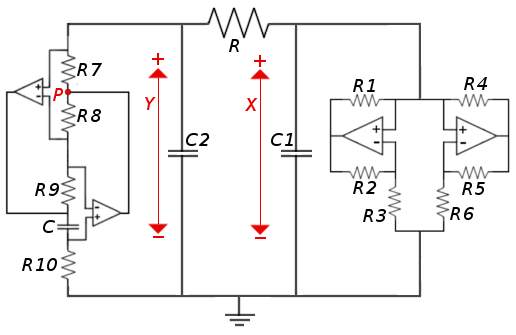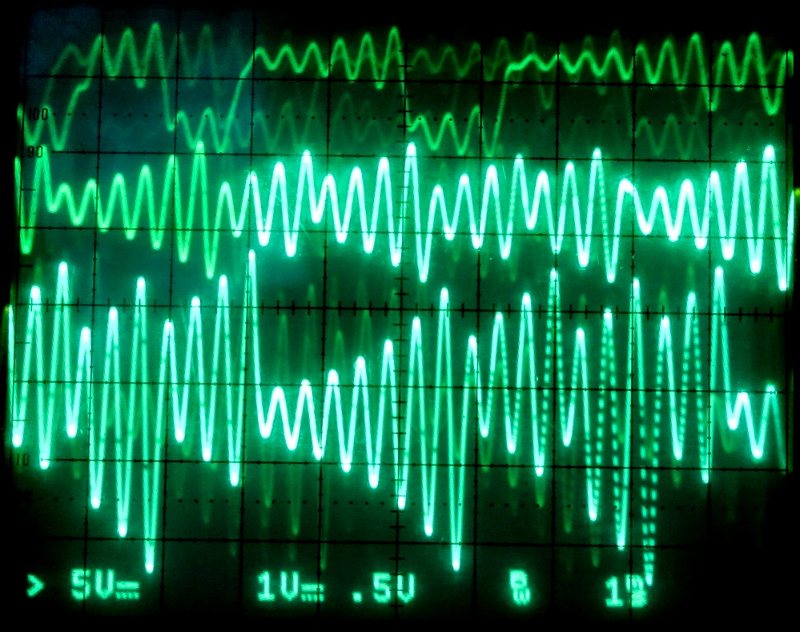three chua's circuit boards

FIGURE B:
signal measurement points

FIGURE C:
XYZ signals plotted together

2 | Components
3 | Boards & Signals
4 | The Double Scroll
5 | Troubleshooting & Tips
Boards & Signals
In Figure A you can see three versions of Chua's circuit. One is on a breadboard, the second is soldered on a grid-style circuit board, and the third is built on a custom designed PCB and has an extra jack to switch between signals for comparison. All use 9-volt batteries and are based on the same basic schematic.
As with any circuit, building this on a breadboard will be faster but not as accurate as soldering your own board. Because this is a resonating chaotic circuit, solid connections are essential to producing sharp, accurate signals. Nevertheless, if you are careful you can still make a decent functioning circuit on a breadboard.
You may notice, however, that the slightest vibration, bump or tweak will wildly affect the signal output.
There are 3 signals that you will want to measure on the Chua's circuit: X, Y, and Z. X is the voltage across the capacitor C1, Y is the voltage across the capacitor C2, and Z is the current through the inductor. Since we are using a gyrator to simulate the inductor, all we need to do is measure the voltage at point P [Figure B], since we can determine the state vectors from just that. The acutal current through our simulated inductor can be calculated by:
Z=(VP-Y)/R7
If you did everything right, you should be coming up with some sinusoidal waveforms like in Figure C when you hook up to your oscilloscope. Plot them against eachother to see some interesting patterns evolve as you adjust the two potentiometers. This part is more art than science, but if you get the potentiometers in just the right positions, you will see the double scroll appear. It's much easier if you have a nice soldered board and good components, but we will talk about getting the double scroll on the next page.
Below you can see signal X in a series of progressivly larger time steps. It is interesting to see the unsteady patterns emerge and as well as waves within waves.




